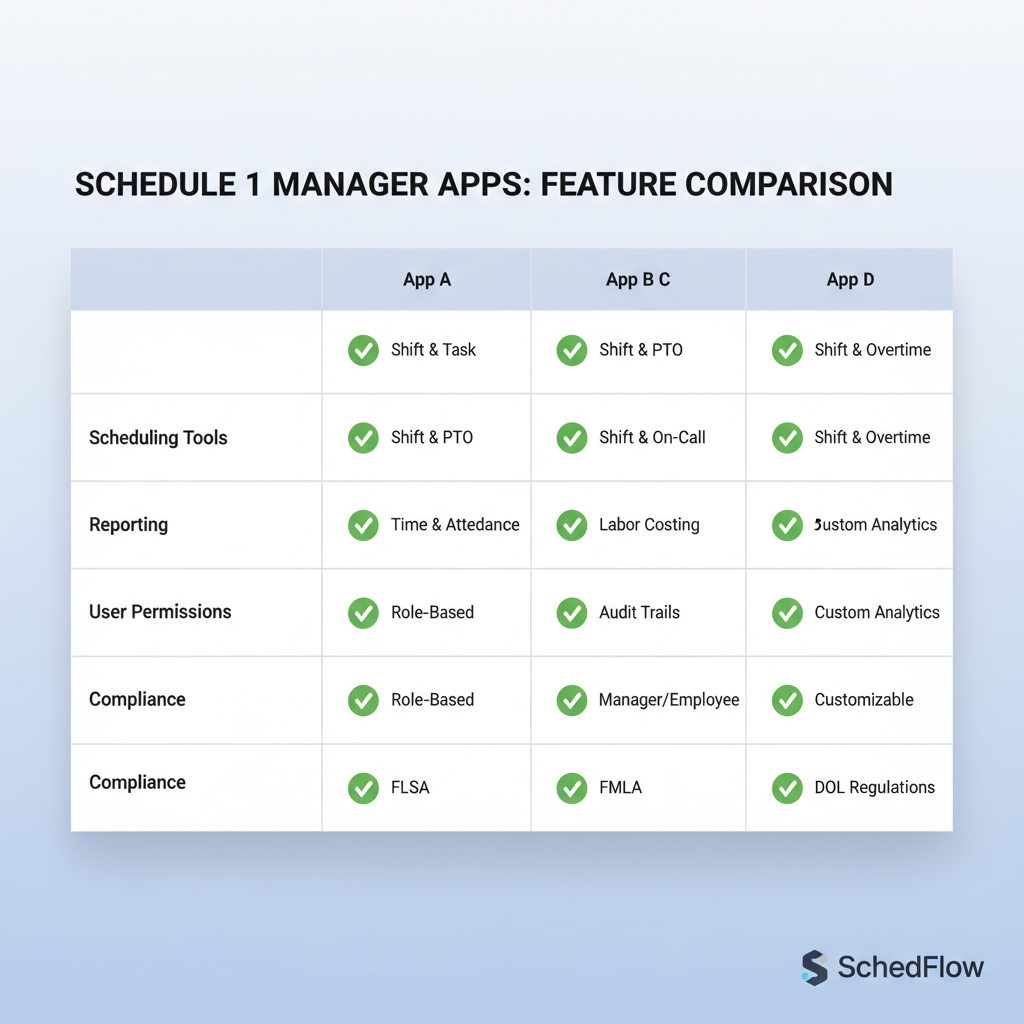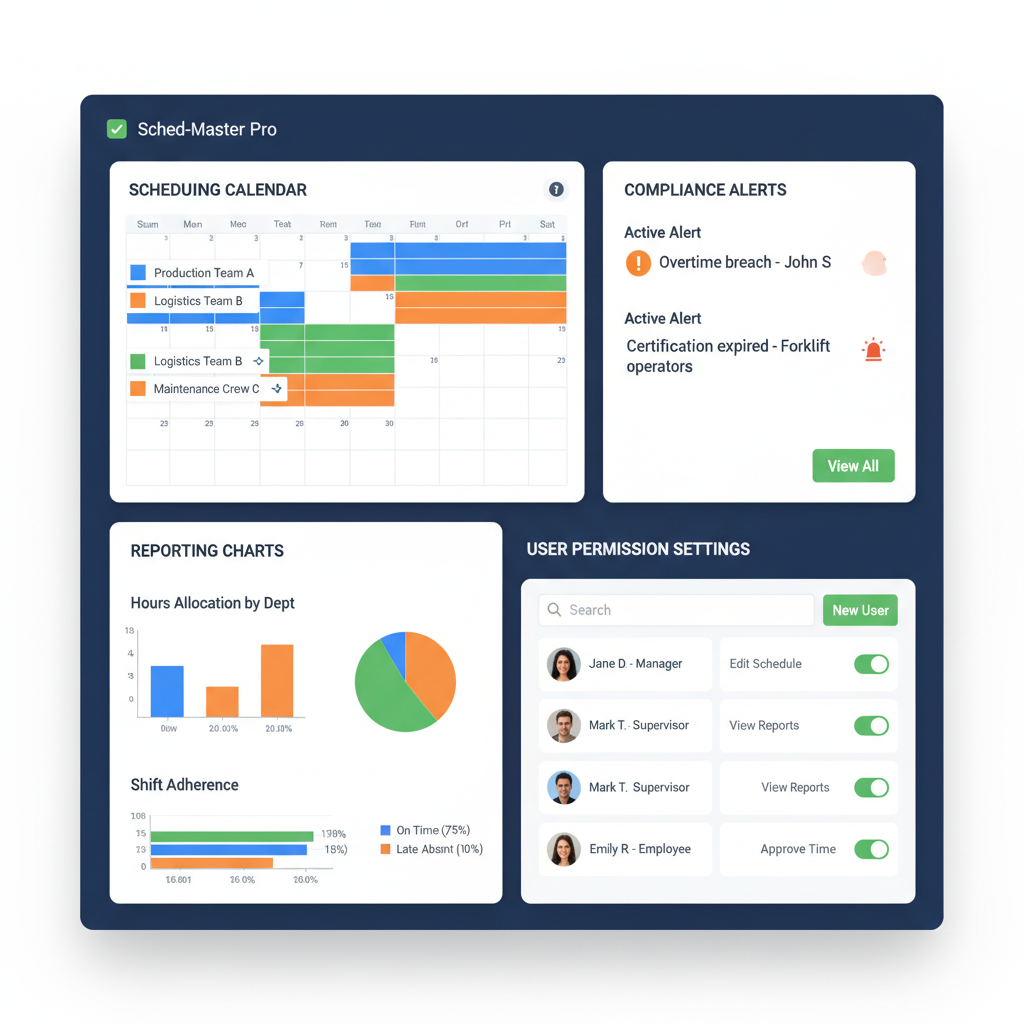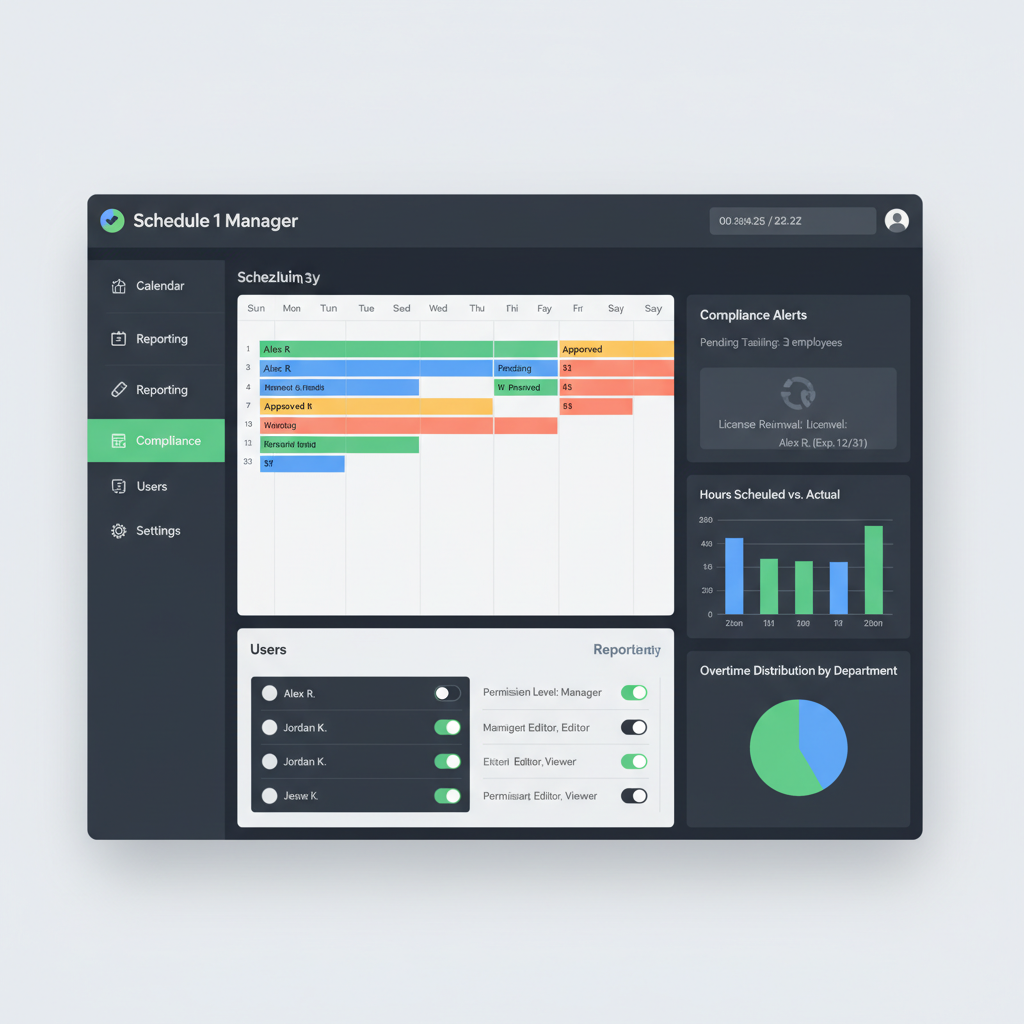Best Schedule 1 Manager App Selection Guide for Businesses
Learn how to choose the best schedule 1 manager app by comparing features, compliance capabilities, integrations, and ease of use for regulated industries.

Introduction
Selecting the right schedule 1 manager app can transform how your organization handles compliance, deadlines, and structured operational tasks. These apps are specifically designed to help businesses in regulated industries track mandatory schedules, record essential actions, and automate reminders—ensuring tasks are completed correctly and on time. In this guide, you’ll learn what a schedule 1 manager app is, why certain businesses need one, and how to evaluate features, security, integrations, and pricing to find the best fit.
---
Understanding What a Schedule 1 Manager App Is
A schedule 1 manager app is a specialized software tool designed to help businesses manage tasks, records, and compliance activities that fall under “Schedule 1” regulations or similar structured operational categories. These may include requirements mandated by government agencies, industry standards, or internal corporate policies.
Core functions typically include:
- Tracking scheduled activities that must occur at fixed intervals.
- Recording compliance-related actions to meet legal or auditing requirements.
- Automating reminders and alerts to avoid missed deadlines.
By digitizing and organizing these obligations, companies reduce human error, maintain compliance, and improve operational efficiency.

---
Business Types That Require Schedule 1 Management
Not every organization needs a schedule 1 manager app, but those working in heavily regulated industries often do.
Common sectors that rely on these tools include:
- Healthcare – Patient care logs, medical equipment maintenance, regulatory inspections.
- Manufacturing – Machinery inspection schedules, safety drills, material usage reporting.
- Transportation & Logistics – Vehicle maintenance records, driver training schedules.
- Financial Services – Compliance audits, transaction monitoring, periodic reporting.
- Government Contractors – Documentation of deliverables, adherence to contract timelines.
These industries face strict reporting requirements, and missing a schedule 1 task can result in financial penalties or loss of licensing.
---
Assessing Compliance Requirements and Legal Considerations
Before selecting an app, understand your industry’s compliance rules:
- Review relevant government regulations.
- Consult internal compliance officers or legal advisors.
- Document mandatory schedules and their associated tasks.
Think of the app as a digital compliance assistant—if it doesn’t fully align with your legal obligations, it won’t serve its purpose.
---
Comparing Key Features Across Apps
When choosing a schedule 1 manager app, compare the most critical features:
| Feature | Importance | Example Benefits |
|---|---|---|
| Scheduling Tools | High | Allows precise time/date allocation for all tasks. |
| Reporting | High | Generates compliance-ready documents and analytics. |
| User Permissions | Medium | Ensures only authorized personnel can modify records. |
| Integrations | High | Connects with HR, payroll, and inventory systems. |
Scheduling Tools
Seek calendars, task prioritization, and recurring event options.
Reporting
Detailed, exportable reports aid in audits and performance reviews.
User Permissions
Role-based control prevents unauthorized changes to sensitive data.
Integrations
Connections with existing systems streamline workflows and improve data accuracy.

---
Evaluating Ease of Use, UI/UX, and Onboarding
A complicated app with poor interface design hinders adoption. Evaluate:
- Clear menus and navigation.
- Customizable dashboards.
- Guided onboarding or team tutorials.
By piloting with a small group of users, you can assess adaptability before a company-wide rollout.
---
Data Security Measures and Regulatory Compliance Protocols
Because schedule 1 tasks often involve sensitive information, robust security is non‑negotiable. Confirm:
- End-to-End Encryption – Protects data in transit and at rest.
- Regular Security Audits – Addresses vulnerabilities promptly.
- Role-Based Access Controls – Restricts access to sensitive tasks and records.
- Compliance Certifications – Such as ISO 27001, SOC 2, HIPAA.
---
Integration Options with Existing Software
A schedule 1 manager app that integrates well with your existing tools saves hours of manual work. Possible integrations include:
- HR Systems – Align employee schedules.
- Payroll Software – Automate task‑linked payment processes.
- Inventory Management – Schedule stock audits and replenishment.
- Project Management Tools – Assign compliance tasks alongside operational projects.
---
Automation Capabilities for Recurring Scheduling and Alerts
Automation ensures recurring tasks are never overlooked. Ideal systems will:
- Auto‑generate tasks from templates.
- Notify staff via SMS, email, or push alerts before deadlines.
- Escalate overdue tasks to supervisors.

---
Pricing Models and Scalability for Growing Teams
Pricing varies widely between vendors. Common approaches:
- Per‑User, Per‑Month – Directly scales with team size.
- Tiered Plans – Unlock advanced features at higher levels.
- Enterprise Licensing – Fixed cost for unlimited users.
Ensure the model supports affordable growth, considering scalability discounts where available.
---
Reading User Reviews and Case Studies
Reviews offer real‑world insight. Look for:
- Recurring complaints about UX, technical issues, or support quality.
- Positive mentions of audit success attributable to the app.
- Feedback from businesses in similar industries.
Case studies highlight measured benefits and implementation strategies.
---
Testing Free Trials or Demos Before Committing
Use free trials or demos to:
- Check device compatibility and workflow fit.
- Verify features meet operational needs.
- Train select staff before full implementation.
Hands‑on testing helps uncover potential problems before investment.
---
Creating an Implementation Plan
Upon selection:
- Define goals and KPIs (e.g., audit pass rates).
- Schedule rollout to minimize disruption.
- Assign internal trainers or champions.
- Back up existing data prior to migration.
- Track adoption over the first 90 days.
---
Monitoring App Performance and Optimizing Settings
Post‑implementation, maintain ongoing evaluation:
- Gather user feedback often.
- Review automation rules.
- Ensure reports meet compliance needs.
- Update integrations with new system upgrades.
Regular monitoring keeps your schedule 1 manager app aligned with regulatory changes and evolving processes.
---
Summary
Choosing the best schedule 1 manager app involves more than comparing feature lists—it’s about aligning technology with compliance mandates, internal workflows, and team capabilities. By analyzing your industry’s regulations, weighing critical features like scheduling and reporting, prioritizing security, and testing before committing, you can select a tool that reduces risk and increases efficiency.
Ready to improve compliance and productivity? Start evaluating top schedule 1 manager apps today and streamline your operations for lasting success.




